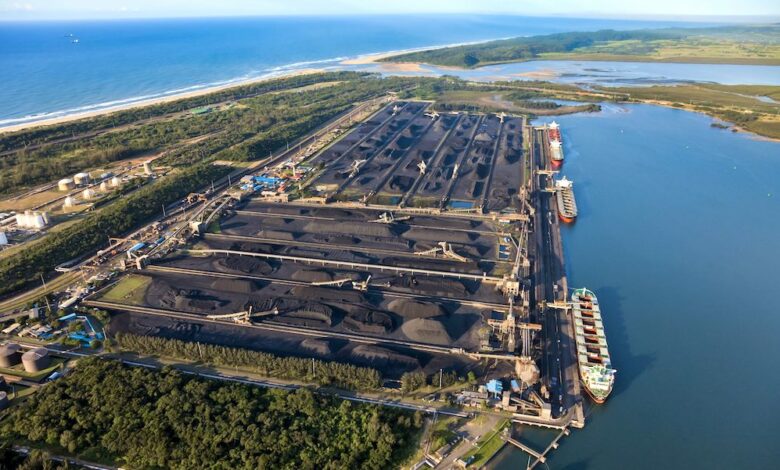
Sourcing coal from further afield is pushing up the tonne-mile picture for dry bulk.
While global coal trade volumes have remained stable this year, ton-days have increased by 6.6% in the first nine months, according to AXS, a sure sign that buyers are being forced to procure from further distances on average.
As a part of European Union sanctions against Russia, the bloc banned coal imports from Russia starting August 10. In the following couple of months Russia has struggled to redirect its coal exports, with export volumes down 7% year-on-year in this period and down 5% year to date, according to statistics from BIMCO.
Despite the drop in volumes, tonne mile demand has seen an increase by almost 30% in the last two and a half months, BIMCO data shows. Since the coal sanctions were announced by the EU in April, average haul for Russian coal exports have risen by nearly 50%, or around 1,250 miles.
“So far, capesizes have seen the biggest increase in tonne miles following the ban, largely due to India’s increased interest in discounted Russian coal. India’s government mandated an increase in coal imports over the summer, due to a surge in energy demand and low coal inventories. This resulted in a boost to tonne miles as capesizes laden with Russian coal from European ports sailed around Africa,” commented Filipe Gouveia, shipping analyst at BIMCO.
So far in 2022, China remains the largest buyer of Russian coal which has accounted for 22.6% of total Chinese coal imports. Even though Chinese coal import volumes dropped 25.7% so far this year, imports from Russia grew 3.5%, likely due to discounted prices.
“In the coming months, panamax and supramax ships should continue to see demand from China for Russian coal. However, the country’s ambitious coal mining target and increasing investments in renewable energy could cool the appetite for coal imports. In the first eight months, coal mining increased 13.8%, while electricity production from renewables rose 16.7%,” added Gouveia.
China holds the “triple crown” when it comes to coal, a recent report from Shipfix noted. The country is the world’s largest consumer of the dirtiest of fossil fuels, and at the same time, it is the largest producer and importer of coal.
China’s seaborne thermal coal imports have increased back near the levels seen last year as winter approaches.
The country imported 22.3m tonnes of thermal coal in September, coming in flat year-on-year but 44.5% above the average import volumes across the first eight months of the year, according to brokers Braemar.
Chinese steam coal imports have mostly been transported by panamaxes in recent months at the expense of capes. Panamaxes accounted for 64.1% of the volumes arriving to China in September, the highest level in the past five years.
“With energy providers aiming to maintain the current 22 days’ worth of inventories, fewer volumes arriving from Covid-stricken domestic mining regions suggest the current levels of imports should be sustained as the disruptions continue, boding well for bulk carrier demand, particularly out of Indonesia,” Braemar stated in a coal shipping update this week.
